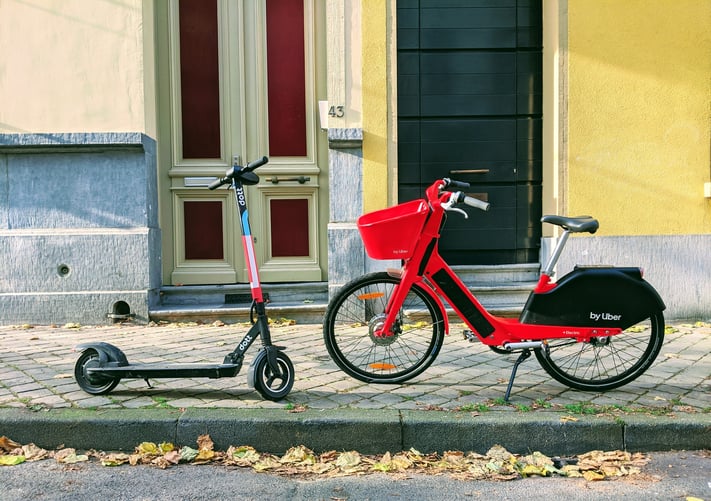 Photo by Lucian Alexe on Unsplash
Photo by Lucian Alexe on Unsplash
Cities around the world are experiencing a micromobility revolution.
But the more e-scooters and e-bikes that are taken to the streets, the more demand there will be for improved bike lane infrastructure that supports these vehicles — just like with the gas tax.
What are the challenges in funding bike lane infrastructure?
Today, local governments have limited resources to pay for micromobility-related improvements.
Even though the material improvements cost pennies on the dollar when compared to full roadway or even transit improvements, dedicated funds to do the planning, outreach, and implementation are hard to come by and are often competing with other worthy needs (e.g., school funding, new bus vehicles, etc.).
You will often hear from public sector employees that finding the elusive “local match” is more challenging than the cumbersome application process for a federal grant. It also means that cities with higher local tax revenues collected through parking fees, property taxes, etc. are able to implement infrastructure while others are not.
How do cities charge for micromobility currently?
Nearly all cities implement some kind of fee on shared micromobility. This fee represents a flexible local funding source similar to fees paid at parking meters.
Unlike parking meters, however, the goal of a micromobility fee is not to manage or limit the demand on the use of a scarce resource (e.g., the curb in popular downtown locations), but rather to make it sustainable. Many agencies use a micromobility fee simply to cover the costs of administering their programs. Others are using a portion of the funds to help fund related infrastructure such as parking corrals.
How should micromobility fees evolve?
In order to enact broader travel behavior changes, a fee that clearly tracks with transformative infrastructure (e.g., a network of protected lanes) will be necessary.
Shared micromobility companies and users are willing to support such fees if they are commensurate with fees on other roadway users and result in efficient spending and rapid implementation that directly benefit people traveling by shared micromobility. In some cities, micromobility operators (and by proxy, shared micromobility users) pay more per/mile in fees than most drivers or even Transportation Network Companies, and certainly more than private bicycle and scooter riders. This runs counter to many city policy goals of increasing access by modes that are less dangerous and have lower climate impacts.
Cities actions during COVID-19 have proven that they are able to quickly dedicate space for “Slow Streets” that can be reinforced with more permanent materials over the coming months with sufficient funding.
If these improvements address the principal barriers to the growth of micromobility by creating a truly safe space for people to ride, then even more people will use scooters and e-bikes, thereby creating a virtuous cycle of more fee revenues to create and maintain this new infrastructure.
This is how a micromobility revolution could happen on the scale of the automobile revolution.